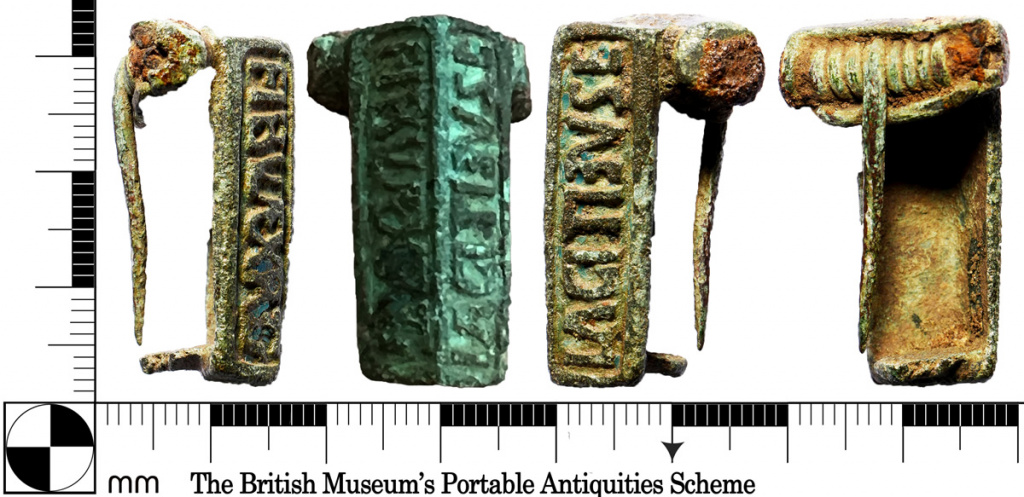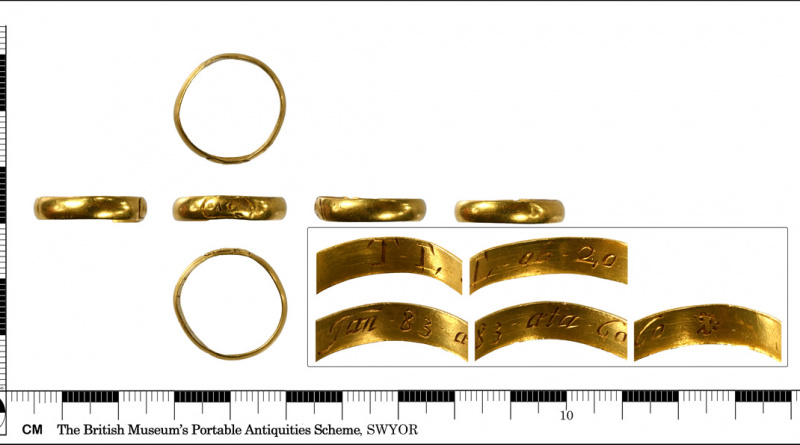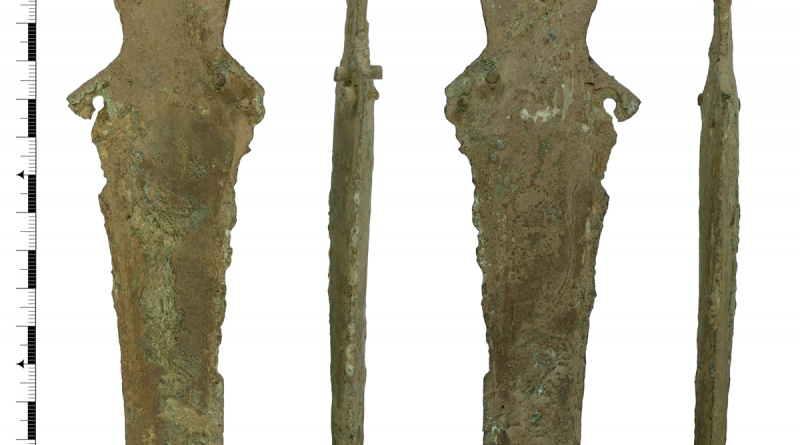PAS Finds (w/e 25/11/22) – FIBULA EX REG LAGITIENSE
PAS Finds (w/e 25/11/22) – FIBULA EX REG LAGITIENSE
My selection of the detecting finds recorded at the PAS during the week ended 25 November 2022.
Featured Find
Roman brooch – FIBULA EX REG LAGITIENSE
A complete Roman knee brooch of Mackreth’s Type 3. The inscription reads FIBUL[A] EX REG LAGITIENSE in two panels which would have been inlaid with enamel. The knee brooch is a later style of Roman brooch from around the 2nd to 3rd centuries and was favoured by the Roman army.
FIBULA EX REG LAGITIENSE
The inscription is short for “Fibula ex regione Lagitiense” meaning “Brooch from the Lagitiense region”. This was based around the Roman settlement of Lagentium, which was in modern day Castleford. Various suggestions for the source of the Roman name include “Place of the Bottles” from the Latin lagenae for bottle or “Place of the Swords“.
The Romans built there first fort here in AD 71. A civilian settlement, known as a viscus, was established near the fort. This may initially been for traders and craftsmen, deliberately settled here by the army. The viscus appears to have been its largest during the first half of the second century. Large quantities of high quality and luxury items have been discovered during archaeological excavations. The discovery of part manufactured brooches and some raw red enamel show that these were been produced here.





